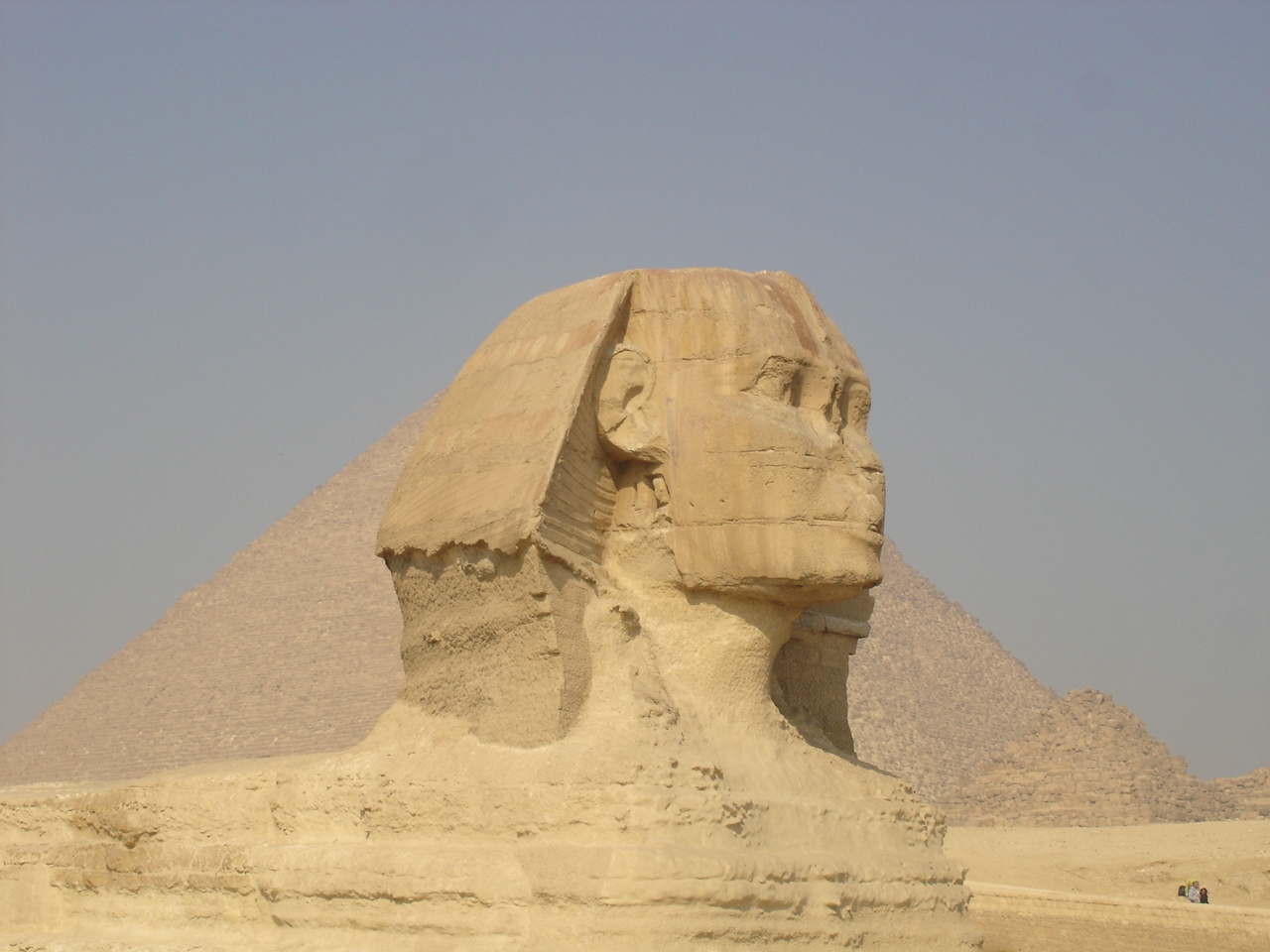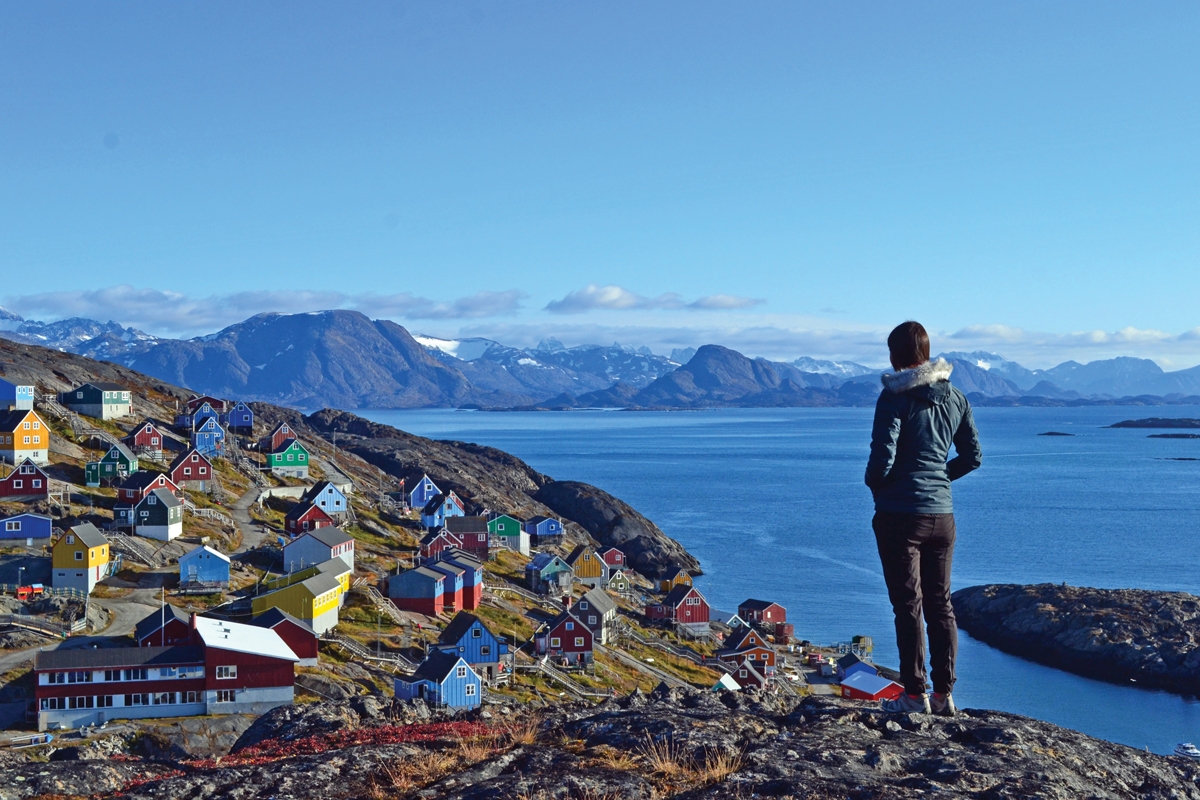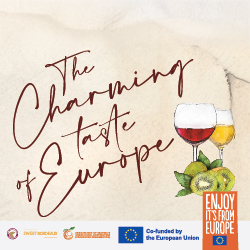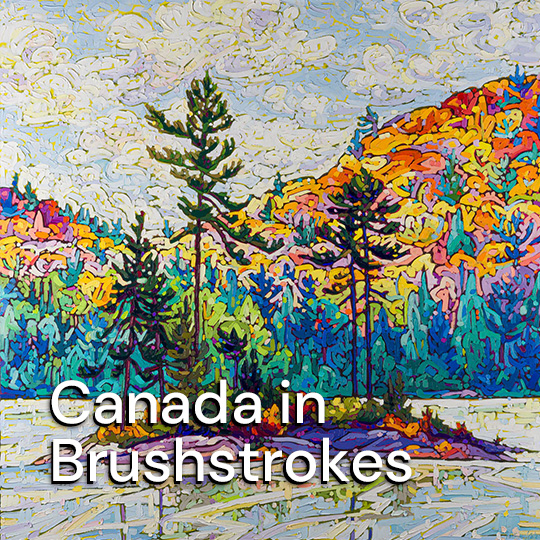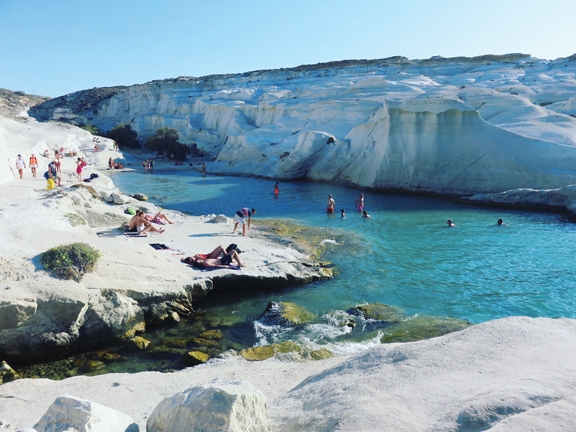
Discovering the Sea Less Travelled in Greece
There are no swaying palm trees here, no powder-white sand. There isn’t a single hotel or resort in sight, no striped umbrellas or beach bars or sunbathing tourists. Instead, the deep-blue sea is surrounded by multi-coloured volcanic rock that creates pillars and caves and cliffs, giving one the impression of being on another planet (or maybe a moon).
And making for a great backdrop when you plunge into the water from your catamaran.
This is Milos, one of the Greek islands in the Cyclades — an island that was created from a series of earthquakes, tsunamis and volcanic eruptions. And while it doesn’t get the same level of attention as its more popular neighbours, like Santorini and Mykonos, that is perhaps what makes it so appealing.
Its rugged coastline offers up more than 75 beaches of sand, pebble or volcanic rock; some are more easily accessible and meant for swimming; some are wild and isolated and require effort to find. But they’re not packed with tourists like beaches on other Greek islands. Some are actually empty.
About half the island is a nature reserve, only accessible by boat or off-road vehicle (indeed, the best way to see it is to rent a boat for the day from the harbour). And it has what some visitors believe are the best beaches in all of Greece.
There’s Sarakiniko, with its lunar landscape of glaring-white volcanic rock, which makes you feel like you’re walking on the moon (if the moon had really cool swimming holes). There are the rock formations of Kleftiko, the caves of Papafragkas and the thermal springs at Kanava, Provata and Pikropiyi. The biggest beach is Ahivadolimni, but there are also beaches with dramatic landscapes at Fyriplaka, Yerakas and Tsigrados.
Many people come to the Greek islands to tick a few things off their bucket list. Santorini? Check. Mykonos? Check. The Acropolis? Check. But that’s like saying you’ve had souvlaki and Greek salad, so therefore you’ve experienced Greek food. There’s much more to Greece and, arguably, more authentic experiences to be found by going off the well-worn tourist path.
A cruise through the Greek islands with Celestyal Cruises took me to Santorini and Mykonos, but also to lesser-known isles such as Milos, Ios and Kos — islands that I had never heard of previously. Turned out, those islands were the best part of my trip.
I’d long wanted to see Santorini, with its blue-domed, whitewashed buildings; after all, it’s the stuff of legends. Clearly, though, I wasn’t the only one.
Santorini is as postcard-perfect as I imagined. But as I elbowed my way through hordes of tourists all clamouring to get the same iconic photo of Santorini — and trying to avoid getting smacked in the face with a selfie stick or accidently photo-bombing someone’s Instagram shot — I found myself longing to get back to quiet, peaceful Milos.
Many of these tourists had been deposited from large cruise ships, the kind with up to 9,000 passengers, who were trying to cram in as much action as they could get in a couple of hours.
Thankfully, I was cruising around the Aegean Sea on a smaller vessel, one that’s small enough to visit ports that larger cruise ships can’t go (or don’t bother to). And while we paid a visit to Santorini and Mykonos, we were also able to avoid the crowds at smaller, less-visited Greek isles and along the coast of the Turkish Riviera.
“There are some ports that cruise lines can go, but rarely choose to do so,” said Dan Buru, cruise director for Celestyal Crystal, who has been with the company for 10 years and witnessed the growth of the cruise industry here.
“The big cruise lines, in order to attract thousands of passengers, they go to more commercial spots,” he said. “We go also to some niche spots where only we can go and where people cannot usually go by ferry or [by plane].”
Milos, for example, is a “hidden gem that nobody goes to,” he said. Why? Because when it’s winter back home in North America, it’s a hard sell: people want white sandy beaches and turquoise water, not volcanic rocks. In some cases, they simply can’t go: at Samos, for example, windy weather conditions make it too difficult for larger vessels to navigate.
“However, if you take this cruise … you go to the main attractions, but you go somewhere that others don’t go to,” said Buru. “They’re not even aware Syros is on the itinerary and when they arrive they’re amazed. Milos is the same.”
While these islands are by no means deserted, they don’t get the volumes of tourists that Santorini and Mykonos see during the summer season — in part, because large cruise ships don’t go there, and in part because they’re less accessible to tourists in general. To get to Ios, for example, you’d have to take a ferry from Santorini; there’s no airport on the island.
Ios does have a reputation as a party island, but there’s more to it than that — especially if you’re out during the day while the partygoers are sleeping off their hangovers. While it’s not completely off the grid, you’ll find expats and backpackers here, only 500 people live on the island permanently. It’s dotted with authentic Greek villages, and has a church for literally every day of the year (yes, 365 of them) dotting the rugged landscape.
The best way to get around is to rent a vehicle or scooter and wind your way through the mountainous terrain on the island’s only road to discover isolated beaches. The Celestyal Crystal arrived in the morning and, after a short, scenic drive, I found myself at the isolated beach of Manganari, along with just a handful of other travellers — and plenty of empty beach chairs to choose from.
I couldn’t quite believe I had a long stretch of sandy beach practically to myself during the high season in Greece. But on some of these lesser-visited islands, it’s possible.
But the Greek isles aren’t just for sun-worshippers. Kos, the ‘island of Hippocrates’, was a surprise, with its lush, green hills, covered in olive groves and vineyards. Foodies can visit the beekeepers in Kefalos, where they can sample thyme honey, traditional loukoumades (mini honey donuts) and raki (a local spirit) flavoured with honey.
Then there’s the award-winning Syrah from the family-run Hatziemmanouil Vineyards. And in Zia, the most traditional village on the island, you can pick up the local liqueur made of cinnamon and sip on black, syrupy Greek coffee. If you want sun and sand, however, there’s good swimming at Marcos Beach.
The Celestyal Crystal has three- and four-day itineraries, for those who want to add some Greek island hopping to their European vacation. On the longer seven-day itinerary, the vessel makes its way to the Turkish Riviera, for a visit to swish Cesme, with its trendy beach clubs and high-end boutiques, as well as Kusadasi, with its Turkish bazaars ideal for shopping (and bargaining). Plus, there’s an option to visit the ancient kingdom of Ephesus, near Kusadasi.
Sure, Santorini and Mykonos are worth a visit, but the true gems of the Aegean Sea are the ones you’ve never heard of — and you just might discover you had the wrong items on your bucket list.

